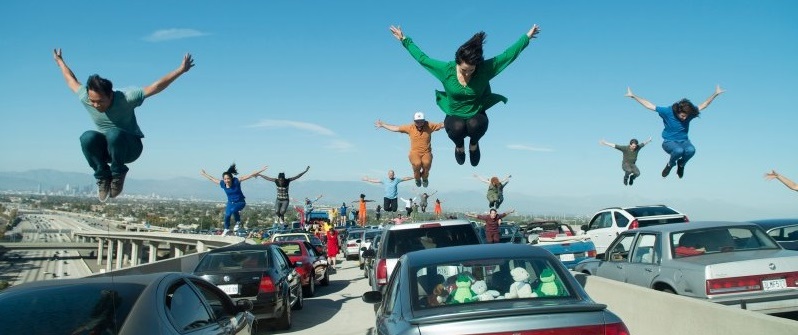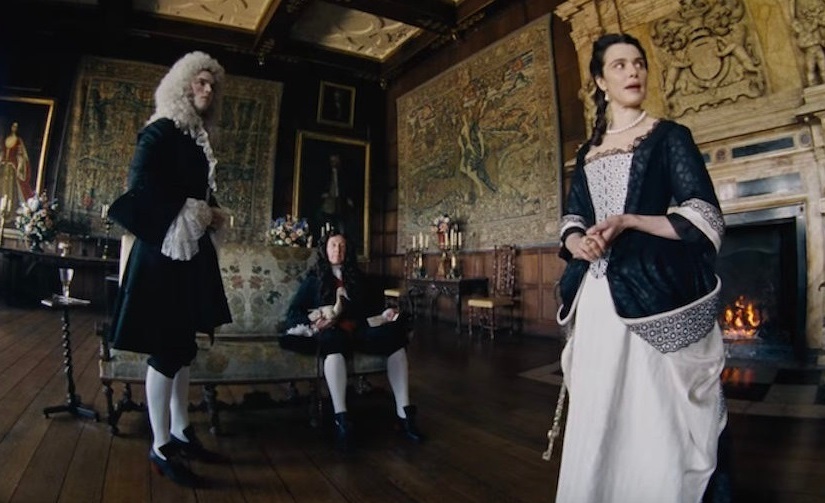By Marc S. Sanders
A sexually explicit rendering of Mary Shelley’s Frankenstein is brought to life by Yorgos Lanthimos’ film, Poor Things. The strongest element of the picture is certainly Emma Stone’s uncompromising performance as Bella Baxter. It’ll at least get an Oscar nomination. The film will likely collect an abundance of nominations as well for it’s fantastical imagination in art direction, garish costuming and makeup and directing. Maybe there will be some accolades for Willem Dafoe and Mark Ruffalo as well. The adapted screenplay of Alasdair Gray’s novel, written by Tony McNamara, is a contender too. It’s already being hailed by many outlets as a top 10 picture for 2023. Yet, I grew tired of the novelty, and bored with the excessive sexual exploits of Bella.
Bella was once a pregnant woman who deliberately plunged herself off a London bridge to escape her misery. Godwin Baxter (Willem Dafoe), who Bella appropriately recognizes as simply God, discovers her lifeless body in time to conduct an experimental procedure. Replace Bella’s brain with that of the unborn child she carries and raise her from there. God is scarred and altogether bizarre, and recruits a medical student named Max (Ramy Youssef) to observe the reborn girl’s progression and behavior; a grown woman with that of an infant who is learning to speak, walk, eat, and behave for herself. After a while it is decided by God that Max will become engaged to Bella. However, another man enters the picture, Duncan Wedderburn (Mark Ruffalo), who convinces Bella to accompany him on a sojourn. God permits the idea as an opportunity for Bella to learn what is out there and not restrict her. It is at this point, that Lanthimos’ film transitions from a blue tinge monochrome photography to vibrant color as Bella and Duncan travel to destinations such as Lisbon, Alexandria, and Paris, where Bella abandons a destitute Duncan to join a Parisian brothel. Bella sees opportunity. She can earn money for allowing men to put their things inside her.
I could not help but think of films like Forrest Gump, The Curious Case Of Benjamin Button and even Pinocchio while watching Poor Things. An unwise subject discovers an independence to witness how a world around her functions. As she learns, she matures, and she realizes she does not need to be held down by any party. Shelley’s monster also broke free of its master’s clutches, tried to acclimate itself, but was revolted against for its grotesqueness on the outside and simply for being misunderstood. Bella does not encounter such a fate. Instead, she discovers acceptance but only at what she’s worth monetarily speaking with a simple attraction limited to individual thought.
Poor Things is constructed in the narrative themes of Yorgos Lanthimos’ preferred way of filmmaking. Just like The Favorite, it’s deliberately weird and proud of it. Nothing appears conventional. You could substitute the settings for Paris, London and even the cruise ship that Bella and Duncan travel on for set pieces in Wonka. It’s all fantasy with an adoption of real-world locales. I surmise Lanthimos excuses these outlooks as a perception of Bella. The settings look like they were spawned from a pop-up children’s book. It’s all so different but I found it to be tiring. If someone were to argue that it is inventive as opposed to another stale backdrop of London Bridge or the Eiffel Tower, I wouldn’t debate them. Yet, I was growing tired of the piece.
Moreover, the second act of the film concentrates abundantly on Bella’s adventures within the brothel. Bella discovers the comfort of self-pleasure. Later, the sensation is enhanced by the possibilities of getting satisfied by the company of a man. The audience chuckled. So did I, but I also squirmed quite a bit. Bella insists to God that she wants to “go adventure,” and God allows her his blessing. Yet, I found these series of sexual encounters to be overly exploitive. Nothing is held back on what Emma Stone performs for the camera as a concubine for one needy, stinky, and ugly gentleman caller after another. She takes it the traditional way, the oral way, the way from behind and much more. She is captured with S & M straps across her nude body and the Oscar winning actress goes all the way to sending the scenes home. It’s as if Yorgos Lanthimos needs to deliver his point, but it’s not enough to try it once, twice, or even three times. I get it already. Bella is used for whatever fetishistic imagination the male mind can fathom and more importantly she thrives off of the stimulation. She happily recounts how a pineapple can be used in the bedroom. It’s even better that she can get paid for this lifestyle. It sounds amusing while I type this all out, but I was not entirely comfortable watching it either. I’ve seen enough porn in my day to not be shocked, and I wasn’t shocked. Yes, I was amused at times. Look, I don’t have ice water running through my veins. Eventually, though, I was just bored.
Godwin Baxter is an interesting character as played by an always reliable Willem Dafoe. Early on, we see how in addition to his experiment with Bella, God has toyed with the ideas of blending different breeds of animals together. Roaming his estate are the likes of a dog crossed with a chicken and a pig crossed with…you know what I can’t even remember after seeing the film only once. There was also a duck crossed with something. Kind of sophomoric material and I think Lanthimos would accept that observation as a compliment. Oh yeah, there was a goat crossed with something too; was that the pig? What I think lacks from Poor Things, however, is to probe if these kinds of experiments should even be conducted and I cannot recall a conversation that goes in that direction. Max seems taken aback by what he witnesses but he never investigates further. This is all most unusual (a serious understatement) and it’s hardly ever questioned. Even Jeff Goldblum tossed a contrary opinion at the idea of Jurassic Park.
I suppose I wanted more from Poor Things. Beyond sexual pleasure and what can be gained from it, isn’t there anything else that naïve Bella has to learn about? I guess in conjunction, she also learns how to earn a wage and a gumption to stand up for herself. What about love and the fear of death? What about what else occurs within the world around her? What about loss, or betrayal? As well, Godwin’s occupations never go further than what we see he is capable and daring enough to do. How do others consider his experiments? What residual effects stem from his accomplishments?
I’m glad I saw Poor Things. I think I’d like to see it again actually because I may gain a greater understanding from the attempts the script strives for in accordance with Lanthimos’ vision. I know this film is not for everyone, though. It’s proudly peculiar, but its plodding in its glee to step very far over a line that most filmmakers wouldn’t dare go. It has my salute for what it has set out to do. Nonetheless, I’m not sure I’m a fan of the material it served, though.




